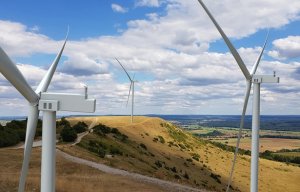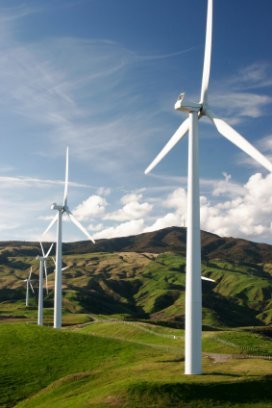
Next generation blades boost for wind power
The study by Frost & Sullivan looks mainly at materials for rotor blades and nacelles but includes foundation and tower applications.

24th August 2015
Innovation in Textiles
|
London
High-strength materials including glass fibre and carbon fibre reinforced plastics (GFRP/CFRP) is expected to replace conventional resins and composites due to their durable and lightweight properties. Most material developers for wind energy have already deployed these products to cater to the rising global demand and the need for increased efficiency.
The new report found that about 9,500 tonnes of composite materials are used annually for manufacturing wind blades. Between now and 2020, the materials segment will grow at a rate of 17% annually. The study looks mainly at materials for rotor blades and nacelles but includes foundation and tower applications.
“Traditional rotor blades tend to be shorter and therefore produce power in the range of 2 to 3 megawatts (MW), whereas the industry requirement is in the range of 5 MW or more per unit to match the demand from end users and to improve the efficiency and profitability of the system,” said Aarthi Janakiraman, Technical Insights Senior Industry Analyst.
“Coupled with the recent emphasis on shifting to renewable sources of energy and its simultaneous adoption in emerging markets such as China and India, this need will keep the R&D of new materials and fabrication techniques for wind blade manufacturing strong.”
The market is looking for materials that have high fatigue resistance and the ability to withstand harsh environments, especially in the rotor blades segment. CFRP is already being adopted as the reinforcement material of choice for larger blades for wind turbines. Retrofitting of existing turbine blades will further improve the adoption potential of CFRPs in this industry. However, the cost of production and raw materials may prove a dampener, eventually making way for the development of more cost-effective hybrid materials.
“Ultimately, focus will be on material and production technology that enables mass customization, application extension to other needs in the wind energy market, and adaptability in order to get maximum return on investment,” concluded Janakiraman.
Impact Assessment of Materials in Wind Energy Generation, a part of the Technical Insights subscription, provides reviews technological developments that might significantly impact existing and emerging material technologies employed to manufacture strong and durable rotor blades for wind energy generation. Further, this research service includes detailed technology analysis and industry trends evaluated following extensive interviews with market participants.
Technical Insights is an international technology analysis business that produces a variety of technical news alerts, newsletters, and research services.
Frost & Sullivan works in collaboration with clients to leverage visionary innovation that addresses the global challenges and related growth opportunities that will make or break today's market participants.
The company’s Growth Partnership supports clients by addressing these opportunities and incorporating two key elements driving visionary innovation: The Integrated Value Proposition and The Partnership Infrastructure.
Click here for complimentary access to more information on this research

Business intelligence for the fibre, textiles and apparel industries: technologies, innovations, markets, investments, trade policy, sourcing, strategy...
Find out more